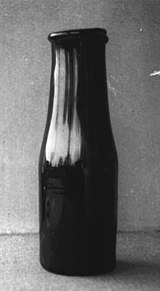As a blog that loves and appreciates all things jams, jellies, and preserves, I thought it fitting that we dive into the history of these delicious fruit spreads to truly appreciate where exactly they come from.
Just as the word “preserves” suggests, jams, jellies, and preserves root back to the concept of preserving food.
The history of jam and preserves begins with the history of food preservation. After all, it was only a few centuries ago that technology was created to store foods over long periods.
Read more at: https://blog.thenibble.com/2017/04/03/food-101-the-history-of-jam-jelly-preserves/
While many believe jams date back to the Greeks in the 16th century (x), that’s not entirely true. People were preserving food as early as the Paleolithic period (aka the Stone Age) 2.6 million years ago, but jams and preserves can be credited to the Middle East potentially prior to the 4th century. In fact, recipes for preserves can even be found in the oldest cookbook, which was published in the late 4th or 5th century. (x)
The first recipe for jam appears in the first known cookbook: De Re Coquinaria (The Art of Cooking) which dates from the 1st century AD. In its simplest form, it was soft fruit heated with sugar (or honey, in this case) and cooled, then stored.
https://life.spectator.co.uk/articles/jam-beautifully-preserved-history/


https://en.wikipedia.org
/wiki/Nicolas_Appert
And then the crusades happened, giving western Europeans access to sugar in the 11th century: “Crusaders return[ed] home talk[ing] of how pleasant the “new spice” was.” (x) Further, Christopher Columbus brought sugar cane plants to grow in the West Indies in 1493. (x)

https://en.wikipedia.org
/wiki/Nicolas_Appert
However, larger scale production of jam didn’t occur until pasteurization was discovered in 1785 by Nicholas Appert, who won a reward from Napolean Bonaparte for discovering a way to preserve large quantities of food for soldiers. (x)

https://en.wikipedia.org/wiki
/Mary,_Queen_of_Scots
When it comes to marmalades, it is believed to have been created in 1561 as a cure for Mary, Queen of Scots’s seasickness. Her physician crushed oranges and sugar together, thus marmalade was born. (x) Marmalade may actually derive from the words “Marie est malade” (Mary is sick), but it is more likely that it is derived from the Portuguese word for quince, marmelo. (x)
Jams and preserves came to the US with colonists. In the 1800s, Smucker’s, Welch’s, and Concord grape jelly were on their way to existence, with Concord grape jelly officially debuting in 1923. (x)
Jelly arrived later than jam due to the fact gelatin was not invented until 1682 by Denis Pain, which made jelly much easier to develop. Now, pectin can be used. (x) Denis never patented the invention of gelatin, so Peter Coopers patented it in 1845. There’s quite a lot of interesting drama regarding gelatin and Jell-O, which you can read about here: http://www.thegeminigeek.com/who-invented-jelly-gelatin-dessert/
The word jelly comes from the French word gelée, meaning to congeal or gel. The word jam appears in 18th century English from the word meaning to press tightly. The word marmalade appeared in the late 15th century, derived from the Portuguese word for quince jam, marmelada.
Read more at: https://blog.thenibble.com/2017/04/03/food-101-the-history-of-jam-jelly-preserves/
I highly recommend checking out some of the articles I turned to while writing this post. They are listed below, and cited throughout. It is incredibly interesting seeing how jams, jellies, preserves, and marmalades have grown and spread throughout the world and our time on this planet.
Sources:
- https://www.lunagrown.com/the-history-of-jam-jelly/
- https://www.seriouseats.com/2007/04/j.html
- https://blog.thenibble.com/2017/04/03/food-101-the-history-of-jam-jelly-preserves/
- https://life.spectator.co.uk/articles/jam-beautifully-preserved-history/
- https://en.wikipedia.org/wiki/Apicius
Much love,
Melissa


